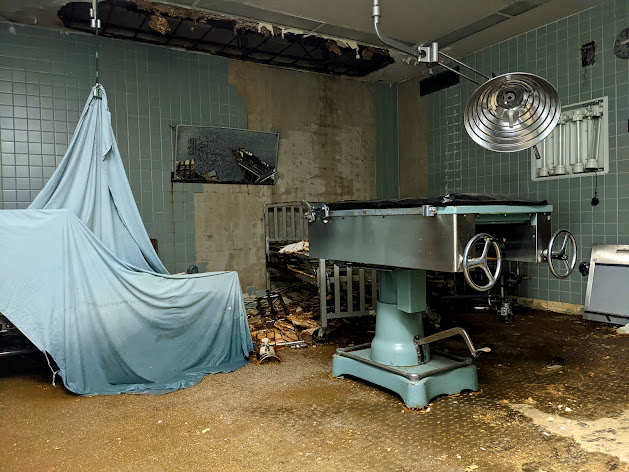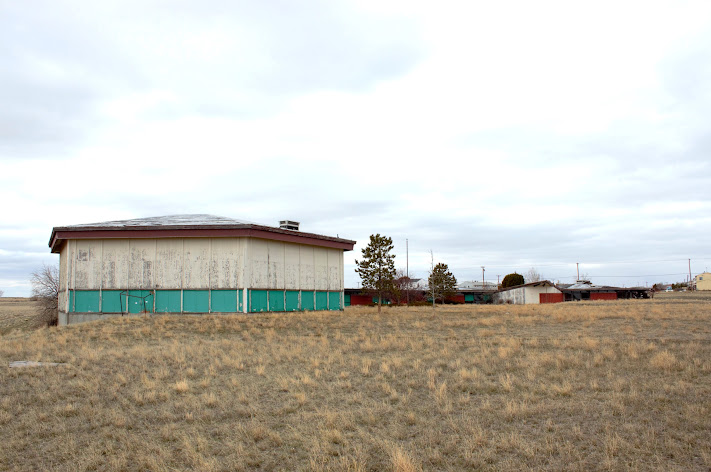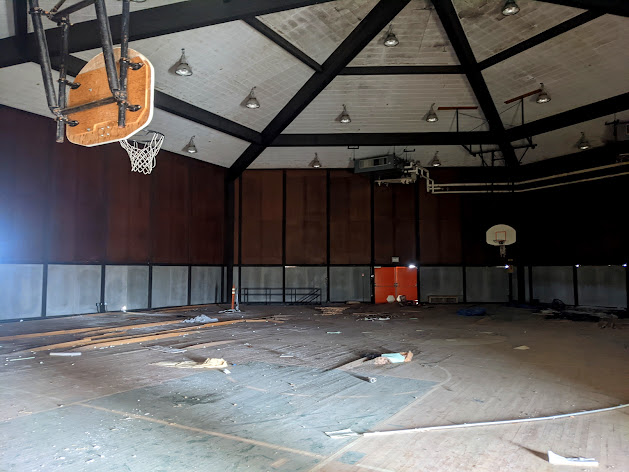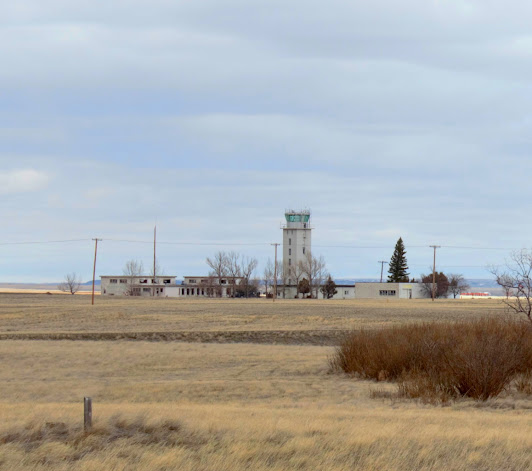-------------------------------------------------------------------------------
Bell Mine Headframe
I huffed in exhaustion as I paused to catch my breath on the hillside. Pulling a bottle of water from my satchel, I turned back the way I came to admire the view as I took a long drink. The towering headframes of the Kelley Mine stood far below me, with the skyline of Butte behind them and the distant mountains rising on the horizon beyond that.
I contemplated the mostly- hidden sun for a moment. It was lower in the sky than I’d have preferred, but I was making good enough time that I was confident I’d make it to the top of the hill and back before nightfall. I stowed my water bottle in my pack and turned back up the slope. The towering skeleton of the Bell headframe stood imposingly tall upon the hilltop, black iron set against a backdrop of grey skies.
I shook the fatigue from my limbs and took a step forward. I had a long hike ahead of me yet, and the sooner I reached the headframe the better. Those skyline shots weren’t going to shoot themselves, after all.
. . . . . . . . . . . . . . . . . . .
Not far from the Kelley mine sits the headframe for the Bell Mine, built in 1898. The Bell mine was one of the oldest mines in Butte with a single shaft descending roughly 3200 feet down beneath this headframe. At some point in the early twentieth century the Bell mine merged with the Diamond mine and the shaft of the Bell mine was backfilled with waste rock from the Diamond mine. The Bell-Diamond Mine, as it became known, remained in operation until 1958. Four years later an explosion would destroy much of the surface works for the Diamond mine aside from the Bell headframe, though almost no information is available online regarding that incident.
Any further information regarding this explosion is overshadowed in the historical record by the Bell-Diamond mine’s involvement in the Granite Mountain-Speculator Fire of 1917, one of the worst hard rock mining disasters in American history. The assistant foreman for the nearby Granite Mountain mine was working on the installation of some electrical cable in the main shaft when his lantern ignited some of the insulation surrounding the cable. The fire quickly spread to the timbers of the mine shaft itself and turned the entire shaft into a massive chimney that rapidly spread the fire throughout multiple levels of the mine.
But though the fire itself burned two would-be rescuers alive as they descended in an elevator cage, by far the biggest killer was the smoke and gas it produced. A mixture of smoke, blackdamp (oxygen deficient air), and whitedamp (carbon monoxide) flooded through all levels of the Granite Mountain mine and into several connected mines, including the Bell-Diamond. This wave of lethal air quickly rendered hundreds of miles of tunnels under Butte unbreathable, killing miners and rescuers alike by the dozens. Many more miners found themselves trapped by the fumes and a few lucky survivors barricaded themselves in airtight pockets for up to two and a half days before escaping.
When all was said and done the fire had claimed the lives of 168 miners between the various connected mines, and simmering tensions between the Anaconda Copper Company and the labor movement boiled over. Two weeks after the Granite Mountain-Speculator fire the Metal Mine Workers Union formed and immediately declared a city-wide strike for safer working conditions, which was joined in solidarity by many of the other trade unions in the city. This caught the attention of union labor organizers around the world and the International Workers of the World sent a socialist labor organizer to help the strikers.
This organizer, a man named Frank Little, was kidnapped, dragged behind a car, and lynched from a bridge on the outskirts of Butte by six masked killers. A note pinned to his corpse indicated that his murder was retaliation for his role in the strike, and the note warned that several other labor leaders in Butte were next. Though nobody was ever convicted of his death, there’s evidence to suggest that his murder was carried out by several high ranking members of the Butte Police Department under orders from the Anaconda Copper Company. This murder combined with infighting between various unions caused the strike effort to collapse three months later, though it did lay the groundwork for future strikes and labor actions.

The headframe of the now-buried Bell Mine.

Standing under the headframe where the backfilled shaft once was, looking straight up.

The winch house for the main shaft of the Bell mine.

The elevator cable still on the spool in the winch house.

The skyline of Butte from atop the Bell headframe. The Kelley mine headframes are on the left hand side.
The Bell Diamond headframe also overlooks the infamous Berkeley Pit, one of the largest superfund sites in the United States. The Berkeley Pit is the flooded remnant of a massive open pit copper mine that ceased production in 1982. Open pit mines must grow wider as they grow deeper in order to maintain the structural stability of the sidewalls, and as the Berkeley mine dug deeper it began encroaching into nearby neighborhoods and forcing the residents to move out. This earned Butte the moniker of “The City That Ate Itself,” and by the time work was halted at the Berkeley mine it was 1600 feet deep, over a mile wide, and had subsumed three neighborhoods.
The bottom of the Berkeley Pit is the deepest point in all the various mineworks of Butte and thus the final destination for the floodwaters in all the mines. Heavy metals, copper (toxic in high concentrations), arsenic, and acid contamination from almost every single mine in Butte trickles into the Berkeley Pit, rendering it completely incapable of sustaining life aside from a few extremophile species of bacteria. The water is so toxic that it is known to kill entire flocks of migratory birds on contact, with one notable mass death in 2016 killing up to four thousand geese through a combination of acute poisoning and chemically burned internal organs after they landed in the Berkeley Pit.
In 2019 the water level inside the Pit rose within 150 feet of the city’s groundwater reservoir and studies projected that the Berkeley Pit would begin spilling into Butte’s water supply by 2023. A wastewater treatment plant was constructed in 2019 to prevent this from happening, and thus far it has succeeded. Cleanup efforts are ongoing to this day.

Some mineworks buildings and residential neighborhoods on the shores of the Berkeley Pit.

A plaque with some history on the Pit.

The Berkeley Pit, with Butte in the background on the right.






































































































